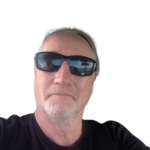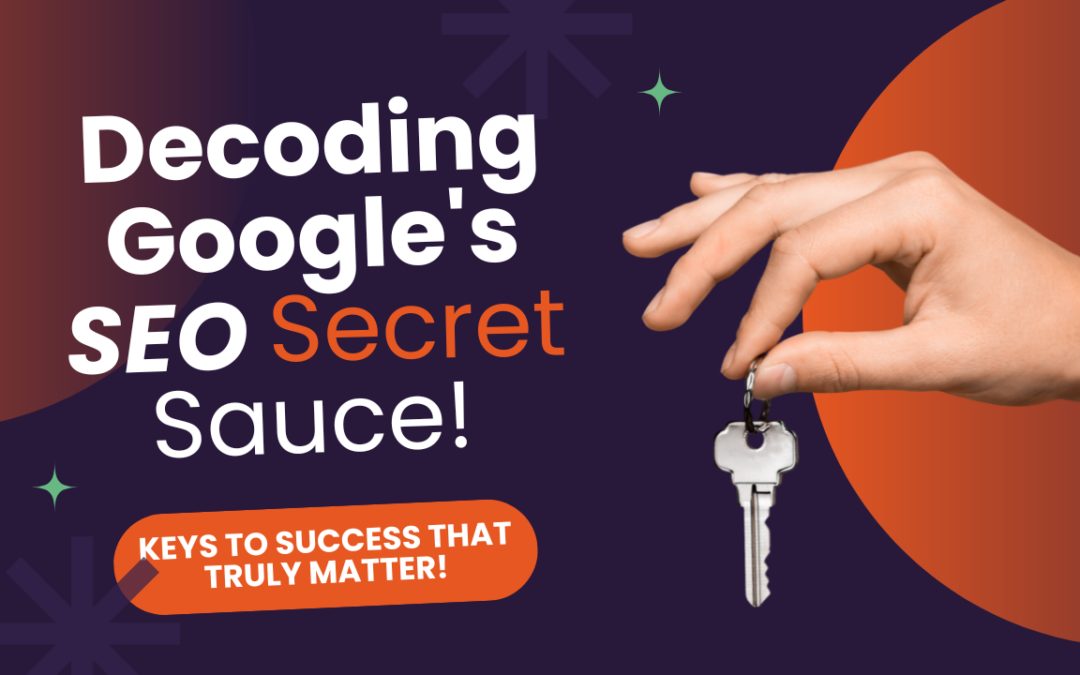
Stop Building Blind! The #1 SEO Mistake Crushing Australian Small Businesses
Alright, let’s have a real chat about your website. You’ve probably poured your heart and soul (and maybe a fair bit of cash) into creating a digital home for your business. Maybe you’re a passionate baker in Fairy Meadow, crafting the most incredible sourdough, or perhaps you’ve just launched a cutting-edge online store selling sustainable Aussie-made pet toys. You’ve got the logo just right, the colours are on point, and it looks absolutely fantastic. You hit that ‘publish’ button, maybe even shared it on your socials, and then… crickets. Sound familiar?
I’ve seen this story play out many many times, and honestly, it breaks my heart a little. You’ve built this beautiful online presence, but it’s like opening a shop in the middle of the desert – no one knows it’s there! And while there can be a bunch of reasons why your website isn’t attracting the crowds you hoped for, there’s one colossal mistake that I see happening over and over again, especially with new websites. In fact, I’d bet a flat white that close to 90% of website owners fall into this trap.
What is this website-killing blunder, you ask? Well, buckle up, because it’s something that might seem simple, but its absence can cripple your online success: not doing proper keyword research before building your website, and therefore not structuring your site and its content around those keywords.
Think of it like this, Imagine opening that sourdough bakery in Fairy Meadow (my hometown) without ever checking if there’s an actual demand for sourdough in the area. You might be passionate about it, but if everyone around you is craving croissants, your beautiful bakery might struggle. The same principle applies online. You might think your ideal customer is searching for “amazing custom website design Sydney,” but are they really using those exact words?
According to recent statistics, over 80% of Australians research products and services online before making a purchase or even visiting a local business. That’s a massive chunk of potential customers you’re missing out on if your website isn’t showing up where they’re looking. And the key to showing up? Understanding what they’re typing into Google in the first place.
Let’s dive deeper into why this seemingly small oversight is actually the biggest hurdle for so many new websites.
Building Blind, Focusing on Looks Over What People Actually Search For
We’re visual creatures, right? So, it’s completely understandable that when you’re building a website, your first instinct is to make it look stunning. You obsess over the colour palettes, the perfect font pairings, and the sleekest layout. And while a visually appealing website is definitely important for building trust and brand recognition, it’s only one piece of the puzzle.
Think about it from your potential customer’s perspective. They have a problem, a question, or a need. They head to Google (or their search engine of choice) and type in what they think will lead them to a solution. They’re not typing in “aesthetically pleasing website with a modern design.” They’re typing in things like “best sourdough bakery near me,” “affordable website designer for small business,” or “where to buy eco-friendly dog toys online Australia.”
If you’ve built your website based solely on what you think is important – maybe you’ve named your bakery’s “About Us” page “Our Story” without mentioning “Fairy Meadow” or “bakery” – you’re essentially building blind. You’re creating a digital space based on your internal understanding of your business, without considering the actual language your potential customers are using to find businesses like yours.
This is where the disconnect happens. You might have the most incredible website in your niche, but if it doesn’t speak the same language as your target audience, it’s like a beautifully wrapped gift with no address – it’ll never reach the right person.
Missing the Foundation, Keyword Research as the Bedrock of Your SEO Strategy
Imagine trying to build a house without laying a solid foundation. You might get the walls up, the roof on, and even decorate the interior, but eventually, the whole structure will be unstable and prone to collapse. Keyword research is the foundation of your entire SEO strategy. It’s not just a nice-to-have; it’s the absolute essential first step that informs everything else you do online.
Think of keyword research as understanding the digital landscape of your industry. It’s about identifying the specific words and phrases (the “keywords”) that your potential customers are actively using in search engines to find information, products, or services related to your business.
This research isn’t just about finding a few popular words. It’s a deep dive into..
- Understanding Search Volume – How many people are actually searching for these terms? This helps you prioritise which keywords to focus on.
- Analysing Competition – How difficult is it to rank for these keywords? Are there already established websites dominating the search results?
- Identifying User Intent – What is the reason behind the search? Are people looking to buy, learn, find a local business, or something else? Read: “Understanding Buyer Intent Keywords and Their Uses for Higher Conversions”
This information then becomes the blueprint for your entire online presence, directly impacting..
- Site Architecture – How your website is structured, including the names of your main pages and categories. A well-researched site will have dedicated pages targeting specific, relevant keywords. For example, instead of a generic “Services” page, you might have separate pages for “Sourdough Bread Baking Classes Fairy Meadow” and “Custom Cake Orders Wollongong.”
- Content Creation – What topics you should write about on your blog, what questions you should answer in your FAQs, and the specific language you should use throughout your website copy. Your content should be written primarily for your users, but it needs to be informed by the keywords they use.
- On-Page Optimisation – Where to strategically place your target keywords within your website’s content, including page titles, headings (H1, H2, H3), meta descriptions (the short snippets that appear in search results), and image alt text (descriptions for your images).
- Link Building (Less Heavily Weighted Now) – While the importance has shifted, understanding relevant keywords can still inform the anchor text (the clickable words) you might use when other websites link back to yours.
Without this foundational keyword research, you’re essentially guessing in the dark. You might create a beautiful website, but it won’t be optimised to attract the right kind of traffic – the people who are actively looking for what you offer.
Consequences of Neglect, The Pitfalls of Skipping Keyword Research
Ignoring keyword research before building your website isn’t just a minor oversight; it can lead to a whole host of problems that can severely hinder your online success. Here are some of the most significant consequences.
- Low Visibility – This is the most obvious and painful outcome. If you’re not targeting the keywords your potential customers are using, your website simply won’t show up in relevant search results. You’ll be buried beneath your competitors, and potential customers will never even know you exist. It’s like having that amazing sourdough bakery tucked away down a back alley with no signage – no one will stumble upon it.
- Wasted Effort – You’ve invested time, energy, and possibly money into building a website that looks great but doesn’t actually achieve its primary goal: attracting customers. All that effort in design and development goes to waste if no one can find you. It’s like meticulously crafting a beautiful advertisement that no one ever sees.
- Difficult Retrofitting – Trying to optimise a website after it’s already built is significantly more challenging and time-consuming than doing it right from the start. It often requires major restructuring of your website’s architecture, rewriting significant portions of your content, and potentially even redesigning elements. This can be a costly and frustrating process. Imagine having to tear down walls and rebuild the foundation of your house after it’s already finished – that’s essentially what you’re facing when you try to retrofit SEO.
- Irrelevant Traffic – Even if your website manages to attract some traffic, without proper keyword targeting, it might not be the right kind of traffic. You might get visitors who are interested in something related to your industry but not specifically in what you offer. This leads to high bounce rates (people leaving your site quickly) and low conversion rates (people not taking the desired action, like making a purchase or contacting you). It’s like attracting people looking for croissants to your sourdough bakery – they might pop in out of curiosity but won’t become loyal customers.
- The “If You Build It, They Will Come” Fallacy – This is a dangerous mindset that many new website owners fall into. They assume that simply having a website is enough to attract customers. Unfortunately, in the vast and crowded online world, that’s rarely the case. Your website needs to be actively discoverable to be effective. Think of it like opening a new store in a busy shopping centre – you need to put up signs, run promotions, and make sure people know you’re there.
- Underestimating the Competition – Even for seemingly niche businesses in Australia, there’s often significant online competition. Without keyword research, you have no idea what you’re up against. You might be trying to rank for highly competitive terms that established players have been targeting for years, making it incredibly difficult for your new website to gain traction. Keyword research helps you identify realistic and achievable targets.
- Not Understanding User Intent – As mentioned earlier, keyword research helps you understand why people are searching for certain terms. Are they looking to buy a product right now? Are they researching information before making a decision? Are they trying to find a local business? Your website’s content needs to align with this user intent to be effective. If someone is searching for “how to make sourdough starter,” they’re likely not ready to buy your sourdough bread just yet. Your content should aim to educate and build trust first.
In essence, building a website without prior keyword research is like building a store in a random location without knowing if anyone wants what you’re selling or if they can even find you. It’s a recipe for frustration and missed opportunities.
The Solution, Prioritising Keyword Research from Day One
The good news is that this common mistake is also easily avoidable. The solution is simple: make thorough keyword research the very first step in your website building project. Before you even start thinking about design, colours, or logos, you need to understand what your potential customers are searching for online.
This research should involve using dedicated keyword research tools. Some popular options include.
- SEMrush (Free + Paid) – A comprehensive SEO tool with robust keyword research capabilities.
- Ubersuggest (Free + Paid) – Offers a free version with basic keyword research features and paid plans for more advanced analysis.
- Ahrefs (Paid) – Another powerful SEO tool known for its backlink analysis and keyword research features.
- Google Keyword Planner (Free) – Provided by Google Ads, this tool can help you discover keywords and see their approximate search volume (though it often provides ranges in the free version).
These tools allow you to..
- Discover relevant keywords related to your products, services, and industry.
- Analyse search volume to see how popular these keywords are.
- Assess keyword difficulty to understand how competitive it will be to rank for them.
- Identify long-tail keywords – longer, more specific phrases that often have lower competition and higher conversion rates (e.g., “best organic sourdough bread delivery Fairy Meadow”).
- Explore keyword variations and related terms.
Once you have a solid understanding of the keywords your target audience is using, you can then use this information to directly inform.
- Your Website’s Structure – Plan your website’s pages and categories around your primary keywords. For example, if you’re a pet toy store, your main categories might be “Dog Toys,” “Cat Toys,” and “Small Animal Toys,” based on your keyword research.
- Your Content Strategy – Develop a content calendar based on the questions and topics your keyword research has uncovered. This could include blog posts, product descriptions, FAQs, and more.
- Your On-Page Optimisation – Strategically incorporate your target keywords into your page titles, headings, meta descriptions, and content.
By making keyword research the cornerstone of your website project, you’re building a website that is not only visually appealing but also strategically designed to attract the right kind of organic traffic – the people who are actively searching for what you offer. It’s like finally putting a clear and prominent sign on your sourdough bakery, pointing directly to your delicious goods and enticing hungry customers to walk right in. And in the competitive online world, that’s the key to turning your website from a silent digital brochure into a thriving hub for your business.
References:
- Australian Bureau of Statistics (ABS): For general statistics on internet usage and business activity in Australia. (
www.abs.gov.au - Think with Google: For insights on Australian consumer behaviour and online trends. (
https://www.thinkwithgoogle.com/intl/en-apac/ - Various SEO blogs and resources: Such as Moz, Search Engine Journal, and Search Engine Land for general SEO best practices.
I hope this serves ya,
 Red
Red
Need a hand? Drop us a Line 📞 🗝 (02) 42444411
Follow Us on Social ⏬⏬
















